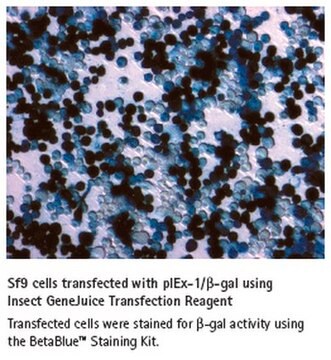CAPHOS
Calcium Phosphate Transfection Kit
Most cost effective transfection reagent kit for transient and stable transfection of DNA into mammalian cells
Synonym(s):
Gene delivery
About This Item
Recommended Products
grade
for molecular biology
Quality Level
form
solution
usage
kit sufficient for 160 transfections (6 cm dishes)
kit sufficient for 400 transfections (3.5 cm dishes)
kit sufficient for 80 transfections (10 cm dishes)
technique(s)
transfection: suitable
shipped in
dry ice
storage temp.
−20°C
General description
Application
- to enable transfection
- to transfect Hek293T cells
- to transfect H29D cells
BAEC
Bowels melanoma cells
CHO K1
COS-7
Fibroblasts (human embryonic, neo derm)
HEK293
Huh 7
IMR-90
LLC (Lewis Lung Carcinoma)
NIH3T3
PC-12
PCI-13
SH-Sy5Y
SK-Hep-1
T47D
Features and Benefits
- Suitable for transient and stable transfection
- Reproducible for a wide range of cell types
- Widely referenced
- Inexpensive
Components
5 ml 2.5M CaCl2 (C2052)
25 ml 2x HEPES Buffered Saline (H1012)
25 ml molecular biology grade water (W4502)
Principle
Other Notes
related product
Signal Word
Warning
Hazard Statements
Precautionary Statements
Hazard Classifications
Eye Irrit. 2
Storage Class Code
12 - Non Combustible Liquids
Flash Point(F)
Not applicable
Flash Point(C)
Not applicable
Certificates of Analysis (COA)
Search for Certificates of Analysis (COA) by entering the products Lot/Batch Number. Lot and Batch Numbers can be found on a product’s label following the words ‘Lot’ or ‘Batch’.
Already Own This Product?
Find documentation for the products that you have recently purchased in the Document Library.
Customers Also Viewed
Articles
Transfection is the introduction of DNA, RNA, or proteins into eukaryotic cells and is used in research to study and modulate gene expression. Thus, transfection techniques and protocols serve as an analytical tool that facilitates the characterization of genetic functions, protein synthesis, cell growth and development.
This brief webinar provides an overview of what transfection is and the methods that are used to introduce DNA or RNA into eukaryotic cells.
Protocols
Calcium Phosphate Transfection Kit Protocol
Our team of scientists has experience in all areas of research including Life Science, Material Science, Chemical Synthesis, Chromatography, Analytical and many others.
Contact Technical Service

